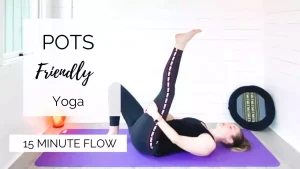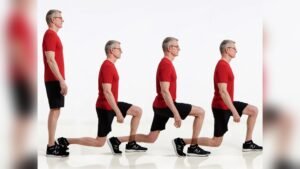Postural Orthostatic Tachycardia Syndrome (POTS) is a condition that affects the autonomic nervous system, leading to an abnormal increase in heart rate when transitioning from lying down to standing up. This syndrome can be debilitating, causing a range of symptoms that significantly impact daily life. The history of POTS dates back to the early 1990s when it was first recognized as a distinct medical condition. Since then, research has expanded our understanding, but many aspects remain elusive.
Table of Contents
ToggleWhat is POTS Syndrome?
POTS is characterized by an excessive heart rate increase of more than 30 beats per minute within 10 minutes of standing. This condition is part of a broader category known as dysautonomia, which involves dysfunction of the autonomic nervous system. The exact cause of POTS is still unknown, but it is believed to be related to a combination of genetic, environmental, and autoimmune factors.
Symptoms and Diagnosis
The symptoms of POTS can vary widely among individuals, but common ones include:
• Dizziness and lightheadedness
• Rapid heartbeat (tachycardia)
• Fatigue
• Nausea
• Headaches
• Brain fog
• Sweating
• Shakiness
Diagnosing POTS typically involves a tilt table test, where the patient’s heart rate and blood pressure are monitored while they are tilted from a lying to a standing position. Other diagnostic methods include blood tests, autonomic function tests, and sometimes, a 24-hour heart rate monitor.
The Benefits of Yoga for POTS Syndrome
Yoga has been practiced for thousands of years and is known for its numerous health benefits. For individuals with POTS, yoga can be particularly beneficial. It helps in improving circulation, reducing stress, and enhancing overall well-being. Historical texts like the Yoga Sutras of Patanjali highlight the importance of breath control and physical postures, which are crucial for managing POTS symptoms.
Types of Yoga Suitable for POTS Syndrome
Gentle Yoga
Gentle yoga focuses on slow, deliberate movements and deep breathing. This type of yoga is ideal for POTS patients as it minimizes the risk of overexertion and helps in maintaining a calm and relaxed state. Poses such as Child’s Pose, Cat-Cow, and Savasana are commonly practiced in gentle yoga sessions.
Restorative Yoga

Restorative yoga involves holding poses for extended periods, often with the support of props like bolsters and blankets. This practice is designed to promote deep relaxation and stress relief, making it highly suitable for those with POTS. Poses like Supported Bridge Pose and Legs-Up-The-Wall are excellent for enhancing circulation and reducing symptoms.
How to Start a Yoga Practice with POTS Syndrome
Consulting with Healthcare Providers
Before starting any new exercise regimen, it is essential to consult with healthcare providers. They can offer personalized advice and ensure that yoga is a safe and effective option for managing POTS symptoms. This step is crucial to avoid any potential complications.
Finding the Right Yoga Instructor

A knowledgeable yoga instructor can make a significant difference in your practice. Look for instructors who have experience working with individuals with chronic conditions. They can provide modifications and adjustments to ensure that the practice is safe and beneficial.
Tips for Practicing Yoga with POTS Syndrome
Modifications and Props
Using props like blocks, straps, and bolsters can make yoga poses more accessible and comfortable. Modifications such as practicing seated or lying down poses can help in managing symptoms and preventing dizziness or fainting.
Listening to Your Body
It is essential to pay attention to your body’s signals and avoid pushing yourself too hard. Take breaks as needed and focus on gentle, restorative poses that promote relaxation and well-being.
Success Stories and Testimonials
Personal Experiences
Many individuals with POTS have found relief through yoga. Personal stories highlight the transformative power of this practice in managing symptoms and improving quality of life. These testimonials provide hope and inspiration for others facing similar challenges.
Expert Opinions
Healthcare professionals and yoga experts often recommend yoga as a complementary therapy for POTS. Their insights and recommendations can guide individuals in creating a safe and effective yoga practice tailored to their needs.
Relevant Data Table For The POTS Syndrome and Yoga:
| Aspect | POTS Syndrome | Yoga Benefits for POTS |
|---|---|---|
| Definition | A condition affecting blood flow | A mind-body practice |
| Common Symptoms | Dizziness, fatigue, rapid heartbeat | Improved flexibility, relaxation |
| Diagnosis Methods | Tilt table test, heart rate monitoring | Not applicable |
| Suitable Yoga Types | Not applicable | Gentle Yoga, Restorative Yoga |
| Starting Recommendations | Medical consultation | Start slow, use props |
| Success Rate | Varies by individual | Positive anecdotal evidence |
FAQs:
1. What is POTS Syndrome?
POTS Syndrome, or Postural Orthostatic Tachycardia Syndrome, is a condition that affects the autonomic nervous system, leading to an abnormal increase in heart rate when transitioning from lying down to standing up. This condition can cause a range of symptoms, including dizziness, fatigue, rapid heartbeat, and brain fog. The exact cause of POTS is still unknown, but it is believed to be related to a combination of genetic, environmental, and autoimmune factors. Diagnosing POTS typically involves a tilt table test, where the patient’s heart rate and blood pressure are monitored while they are tilted from a lying to a standing position. Other diagnostic methods include blood tests, autonomic function tests, and sometimes, a 24-hour heart rate monitor.
2. How can yoga help with POTS Syndrome?
Yoga can be particularly beneficial for individuals with POTS as it helps in improving circulation, reducing stress, and enhancing overall well-being. Gentle and restorative yoga practices are especially suitable for POTS patients as they focus on slow, deliberate movements and deep breathing, minimizing the risk of overexertion. Poses such as Child’s Pose, Cat-Cow, and Savasana are commonly practiced in gentle yoga sessions. Restorative yoga involves holding poses for extended periods, often with the support of props like bolsters and blankets, promoting deep relaxation and stress relief. Poses like Supported Bridge Pose and Legs-Up-The-Wall are excellent for enhancing circulation and reducing symptoms.
3. Are there specific yoga poses recommended for POTS?
Yes, certain yoga poses are particularly beneficial for individuals with POTS. Gentle and restorative yoga poses are highly recommended as they focus on slow, deliberate movements and deep breathing. Some of the recommended poses include:
• Child’s Pose (Balasana): This pose helps in calming the mind and relieving stress.
• Cat-Cow Pose (Marjaryasana-Bitilasana): This pose helps in improving flexibility and circulation.
• Savasana (Corpse Pose): This pose promotes deep relaxation and stress relief.
• Supported Bridge Pose (Setu Bandhasana): This pose helps in enhancing circulation and reducing symptoms.
• Legs-Up-The-Wall Pose (Viparita Karani): This pose helps in improving blood flow and reducing dizziness.
4. How often should someone with POTS practice yoga?
The frequency of yoga practice for individuals with POTS can vary based on their symptoms and overall health. It is generally recommended to start with short, gentle sessions a few times a week and gradually increase the duration and frequency as tolerated. Listening to your body and avoiding overexertion is crucial. Consulting with healthcare providers and working with a knowledgeable yoga instructor can help in creating a safe and effective practice tailored to individual needs.
5. Can yoga replace medical treatment for POTS?
Yoga should not be considered a replacement for medical treatment for POTS. It can be a beneficial complementary therapy that helps in managing symptoms and improving overall well-being. It is essential to consult with healthcare providers before starting any new exercise regimen and to continue following prescribed medical treatments. Yoga can be integrated into a comprehensive treatment plan that includes medication, lifestyle changes, and other therapies recommended by healthcare professionals.
Conclusion:
Yoga can be a beneficial complementary practice for individuals with POTS Syndrome, offering potential improvements in symptoms and overall well-being. Always consult with healthcare providers before starting any new exercise regimen. For more information on how yoga can benefit the autonomic nervous system, visit Colorado Functional Cardiology and Two Being Healthy.
Posts References:
yoga to regulate the autonomic nervous system
Yoga for POTS (postural orthostatic tachycardia syndrome)







